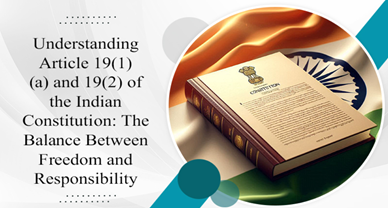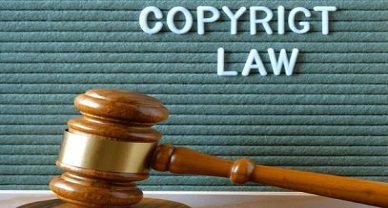Media Trials and Judicial Integrity: An Analysis
INTRODUCTION
In a world dominated by digital networks, the impact they have had on the judicial sphere has been interestingly developed, showing how media trials have been born. What this means is that there is heavy media hype over high-profile legal cases, which anticipates public spectacle outside any courtroom. An obvious example is celebrity scandals or heavily politicized probes from which one can understand how media trials have the potential to shape or influence public opinion, judicial processes, and general societal disposition towards justice and fairness. This introduction presents a few complexities of the media trial and its accompanying implications for both society and the judiciary. For staying relevant and upped television ratings, the media has taken a leap beyond human limits. This inadvertent leap puts pressure on the judiciary to respond in a particular way besides hindering the neutral administration of justice. While the honorable courts have been upholding freedom of the press, the cases raised eyebrows when the media started pronouncing verdicts before evidence verification or guilt proof. The three-tier legislature and judiciary recognized the need to set boundaries and so endeavored to formulate rules and regulation for mitigating the negative impact of trials by the media.
CONSTITUTIONALITY OF MEDIA TRIALS
Article 19(1)(a)[1] of the Indian Constitution, freedom of speech and expression does not include the trial by media or any of its principles in the Constitution. Freedom of the Press is part of one’s freedom of speech and expression. The entire idea of freedom of speech revolves around the expression or communication of ideas in whatever medium. But there are some restrictions in this Article, making it not absolute. The legislature has the power to impose reasonable restrictions on the manner in which this right is exercised. Restriction in press freedom in India is possible only when excessive press freedom has been being exercised. Overpressured press freedom is one of the prime ingredients of democracy, but when it starts stepping over the other functions of any democratic functionary, there arise conditions for restrictions on its operation. In Sakal Papers Ltd. v. Union of India[2], Increased charging, thereby lowering readership, would be illegal,” pronounced the Supreme Court. Hence, the judgment was that rights granted by Article 19 of the Indian Constitution prohibiting the increased feeble charges must be considered for the very sacrifice of freedom of press and expression to disadvantaged reasons enumerated in Article 19 (2). The other proposition on the issue raised is that the Supreme Court has held trial by press, electronic media or trial by way of a public agitation as instances that can at best be described as the antithesis of rule of law as they can lead to miscarriage of justice. The court observes that a Judge must withstand this kind of pressure. Thus, media under the garb of freedom of press should not misuse their power and restrict themselves to the function of creating awareness among people about their surroundings, instead of encroaching into the functioning of the judiciary.
There has been considerable debate on the way privacy and public interest should be understood in terms of the conflict between freedom of the media to publish information and the right to privacy. Well, it’s not that privacy has been given any importance in the letter of Indian law; rather, the history of it has now evinced constitutional legitimacy, which resulted in the development of the Personal Data Protection Bill in 2019. The big question arising is whether the PDPB – about to become a law on privacy in India – contains provisions for the protection of people against intrusions of their privacy by the media. Likewise, the Supreme court of India in R. Rajagopal v. State of T.N.[3], declared that the press has a right to be an uninhabited audience into matters involving public people in subjects and events. “Although a good balance must be struck in respect of press freedom, right to privacy and sustained defamation in regard to their private lives in order to maintain that democratic way of life prescribed by the Constitution of India.”

The country’s well-established judicial system is now subservient to the newly acquired media roles. The judges presiding over the system would, deliberately or mistakenly, affix a bias hue to the thoughts. The image thus created for the defendant could be far removed from the real facts, which could only be learnt after the matter has been heard and determined in its merit. There is too much pressure tha judges are undergoing to budget for the public. The classic example of it is when the judgment indulges in references to social morality for its decisions, for instance ‘based on society’s collective conscience’ and ‘society’s cry for justice. Thus such media trials may shun judges from going against a large majority of public opinion brought forward by sensational media coverage. One of the most important aspects of a fair trial, namely the right to be heard by an independent, unbiased, and qualified judge, has already been denied as it bore a mark of inherent bias. Media trial is unpredictable in another sense, where it shapes public opinion to make the netizen not only a spectator but also a party to the case. Such reluctance translates into lawyers’ unwillingness to take on such people (usually true in terrorism cases). Hence, the accused is left almost emptied of the right to the attorney of his choice and practically forced to take the readiest available one.
INDIAN JUDICIARY ON MEDIA TRIALS
Sanjay Dutt v. State Through C.B.I. Bombay[4]
Sanjay Dutt was acquitted after eleven long years, with all allegations against him finding no evidence that he had acquired the arms for self-defense from terrorism, as in the case of Dutt. Sanjay also managed to secure bail from the apex court in an Arms Act conviction, which led to a six years of imprisonment. On July 31, 2007, he was transferred from Yerawada prison in Pune, and subsequently released on bond. Later, a further reduction of his sentence was made by the Supreme Court to just five years on March 21, 2013, which finally ended on February 27, 2016. The case of Sanjay Dutt was very much in the limelight, given that he was an actor. He was portrayed as a terrorist by the same media that later found that he was acquitted of those charges by the court. Being an actor, he faced lots of problems and negative publicity after this event, and it tarnished his image.
State (Through CBI) v Santosh Kumar Singh[5]
Law student Priyadarshini Mattoo stayed at her uncle’s house in New Delhi. Her dead body was found on January 23, 1996. Initially, the main accused was believed to be Santosh Kumar Singh, her senior who had stalked and harassed her for long. Later it was discovered that Santosh, son of an IPS officer, was the chief accused after he gagged and strangulated her. Santos hit her with helmets repeatedly on her face, making it impossible to recognize the face. The conviction and death sentence were a result of an appeal in the High Court, which was ignited by relentless popular outcry and media hounding against acquittal. On October 30, 2006, the Delhi High Court imposed the death sentence, which was subsequently commuted to life in prison by the Supreme Court.
CONCLUSION
Media trials have, while proof of the media’s teasing power that forms public dialogues, a greater challenge to highlighted impartial and independent functioning of the judiciary. For it confronts media freedom with judicial processes, emphasized the fine line drawn between democratic values and individual freedoms. The role of the media as the fourth estate of a democracy is very important but when it becomes that kind of parallel court, pronouncing premature verdicts, it influences public opinion and deprives fundamental tenets of justice like presumption of innocence and fair trial.
Over and over again, judicial orders and constitutional guarantees have mandated that the media exercise self-restraint while reporting, so as not to prejudice ongoing litigation. Freedom of speech and expression, including the freedom of the press, is assured under Article 19 of the Indian Constitution, but such freedom is not absolute. Some reasonable restrictions on the media may be required so that their interference with lawful proceedings or invasion of individual rights such as privacy and reputation does not occur. Media trails may have eventful consequences; a few can probably include: casting a shadow over the minds of judges per se, forcing them to bend with public opinion, and depriving the accused of his right to a fair defense. Making public opinion an active participant in a legal case certainly corroded the sacred environment of judicial proceedings and cũng giam for their independent functions.
To address such problems, however, it is essential to create a framework that balances press freedom with judicial integrity. Responsible journalism must emphasize factual reporting against sensationalism, guided by ethical practice. Further legislative measures, such as the Personal Data Protection Bill, can provide further safeguards against undue media interference in sensitive things.
In the end, it is possible for the media and judiciary to coexist, respecting the different roles they play in making a just and equitable society. Such a balance can also help shift the paradigm from media trials being a threat to judicial independence into one where it becomes a tool to strengthen accountability, transparency, and the rule of law.
Author: Mansha Nair, in case of any queries please contact/write back to us at support@ipandlegalfilings.com or IP & Legal Filing
[1] Article 19(1)(a), Constitution of India, 1950
[2] AIR 1962 SC 305
[3] 1995 AIR 264
[4] 1995 SCC (6) 189
[5] 2007 CriLJ 964, 133 (2006) DLT 393


